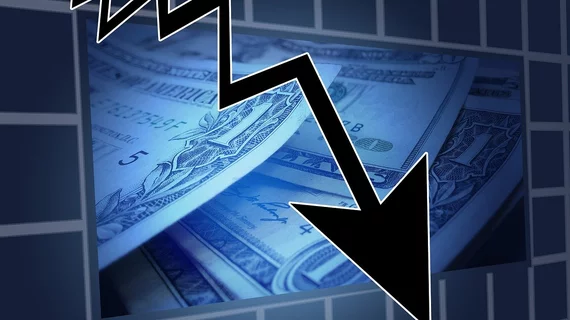Radiologists suffered 3% salary dip during pandemic, with overall physician pay holding steady
The pandemic hit medical providers hard, with nearly half of physicians reporting drops-offs in patient volumes, according to survey results shared by Medscape on Friday. And radiologists felt it in their wallets, with overall compensation dropping by roughly 3%.
That equates to an average annual salary of $413,000, pushing radiology out of the top-five highest-paid specialties. Last year’s report, based on 2019 figures, saw imaging professionals take home about $427,000 per year, good for fifth place.
And despite the hardships inflicted during COVID-19, the nearly 18,000 physicians surveyed in the U.S. said their average salary stayed nearly unaffected from the year prior, landing at $242,000 in 2020. Specialists fared similarly, taking home an average of $344,000, only $2,000 less than in 2019, Medscape reported.
“Many physicians used the Paycheck Protection Program to help keep them afloat; … a large percentage reduced their staff, which reduced their expenses; and those in capitated plans were still getting paid even though they weren’t seeing as many patients,” Michael Belkin, JD, of physician search firm Merritt Hawkins & Associates in Dallas, told the news outlet.
Oncologists, rheumatologists, cardiologists and plastic surgeons were among those who saw a bump in their annual compensation, with the latter jumping by more than 10%. Only dermatologists, pediatricians, anesthesiologists, otolaryngologists, and allergy and immunology specialists saw their pay drop more than rads.
It’s no secret that imaging volumes declined dramatically during the height of the pandemic, with some reports indicating mammography plummeted upwards of 90% in community practices.
Results of the online survey indicated 22% of physicians suffered reduced hours, with 13% struggling through a temporary period of no income. Forty-five percent, however, reported no financial or practice-related downsides due to the pandemic.
The majority of physicians and specialists who worked fewer hours have since had their time restored. Meanwhile, 28% and 32% of primary care providers and specialists, respectively, have recovered lost pay. Some 30% of PCPs and 26% of specialists are still struggling with both pandemic-induced setbacks.
Looking forward, more than a third of primary physicians and specialty providers believe their income will return to normal this year, while most are expecting to earn their pre-COVID salary within the next 2-3 years.
Medscape and MDedge member physicians were asked to complete the voluntary survey between October 2020 and February 11, 2021. Among physicians across 29-plus medical specialties, 4% identified as radiologists.
Read more from Medscape’s annual compensation report here.

